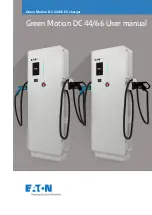
INSTRUCTION MANUAL
Charger for Milwaukee batteries 7.2V to 24V
(NiCd and NiMH)
This charger should not be used to charge Li-ion batteries.
CEH9108
CHARGER SPECIFICATIONS
• The separate universal AC adaptor (power supply) can be used with
world wide AC voltage of 100V~240V, 50~60Hz.
It has an output of 36V DC 2Amp and is plugged into the battery
charger unit.
CHARGE TIME
:
Nickel Cadmium
Nickel Metal Hydride
Capacity (Ah)
1,3
1,5
2,0
2,1
2,5
3,0
3,3
Time in Mins
52
60
80
84
100
120
132
CHARGING ADVICE
:
• DO NOT charge the battery pack in an air temperature below
+0ºC (32ºF), or above +40ºC (104ºF). This is important and
will prevent serious damage to the battery pack.
• It is normal for the charger and battery pack to become
warm to the touch while charging.
• DO NOT CONTINUE to use a battery with low voltage or
capacity. Immediately charge the battery.
CHARGING PROCEDURE
:
1 • Connect the power supply output plug to the input socket
on the charger, and then plug the other side cord into an
appropriate AC wall socket.
2 • Insert the battery pack into the charger, making sure the
pack is fully seated in the battery cavity. The yellow
charging light will come on indicating that the charging
process has begun.
3 • The charger will show a steady green light when the
battery pack is fully charged.
If the battery is left in the charger after the battery is fully
charged it will automatically switch to trickle charge mode
4 • After charging is complete unplug the charger from the
power source.
LIGHT INDICATORS
:
• Pack charging: Steady yellow light
• Fully charged: Steady green light
• Faulty battery: Yellow light blinks at 3 times per second
• Short circuit: Yellow light blinks at 2 times per second
• Temperature delay: yellow light blinks at once per second
CAUTION
:
• Please read all instructions before using the charger.
• This charger is designed for indoor use only.
• Do not probe with conductive metal objects during charging.
• Do not insert a cracked or damaged battery into the charger
• Do not allow any liquid to get inside charger. Keep it away
from water and moisture.
• Make sure the power supply and adaptor cord is located so
that it will not be stepped on, tripped over, or otherwise
subjected to damage or stress.
• To reduce the risk of damage to the electric plug and cord
when disconnecting the charger from the wall socket, pull by
the plug rather than the cord.
• Use only the power supply supplied, to avoid any possible
damage to the charger




















